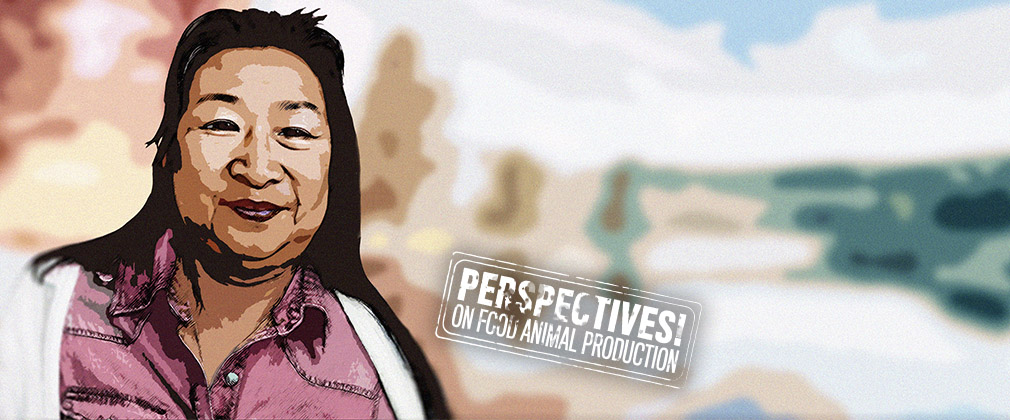Providing Medical Care in Communities with CAFOs
“Now that I’m retired, I can clean up what I should have been thinking about then—but there weren’t enough hours in the days.”
Madeline Luke is a community organizer and retired physician who spent most of her career—40 years—in rural North Dakota. Originally from the Northeast, she’s been surprised by some of the health challenges faced by her neighbors and patients in her rural agricultural community. In North Dakota, the first person she met who had experience with blue baby syndrome was her children’s caretaker.
“My children’s nanny had five children, and she lost one of them to blue baby syndrome,” she says. “I never even heard of that in Rhode Island. In first world countries, you never even think about it.”
Blue baby syndrome, or methemoglobinemia, occurs when an infant has insufficient oxygen in her blood. The condition has been linked to an excess of nitrates in drinking water used for infant formula. In areas where industrial livestock facilities are located nearby, groundwater often tests as containing more nitrates than is considered safe, which can be the manure and fertilizers applied to the ground.
The Environmental Protection Agency’s maximum contaminant level for nitrate, which is set to protect against blue-baby syndrome, is 10 mg/l, and while nitrate does occur naturally in groundwater, concentrations greater than 3 mg/l generally indicate contamination. This limit was established in 1962 by the Public Health Service, and the EPA adopted it as part of its Safe Drinking Water Act in 1991.
“But newer studies suggest a level of 5 milligrams per liter to protect against miscarriage and premature labor and colon cancer,” says Luke. “And we know that colon cancer is rising in young people. We know that causation and correlation are not the same, but it’s interesting.”
As much as she wishes she could have talked with her patients in her rural practice about water quality, air quality, antibiotic resistance, and pandemic potential, Luke has learned over 40 years that there isn’t always the time or opportunity.
“I had to address the issue that they came in for,” she says. She did some short-term medical practice in Worthington, Minnesota, the heart of hog country, and says, “A lot of those folks had been traumatized, and they needed social services, so I spent a lot of time making phone calls and making connections.”
When she was practicing, both in North Dakota and other locations, she was in the habit of having one-on-one conversations with her patients, and the conversations could be frank and sometimes difficult. Her patients, the majority of whom were immigrant workers, came to her with pre-existing conditions such as AIDS or diabetes, as well as back pain, leg injuries, and carpal tunnel syndrome. They worked at industrial operations with dangerous equipment. “I’ve seen immigrant workers with the most horrible injuries in the world,” she says. There isn’t always a good moment to bring up nitrates or air quality or biological hazards such as MRSA and H5N1.
“Trust is quite, quite important,” she says. “But if you don’t talk about air quality and water quality, people are never going to understand the health implications. That goes for antibiotic resistance and for the pandemic potential of CAFOs, as well.”
Unfortunately, she says, the American Medical Association has only a rudimentary understanding of the issues she feels are missing from medical practice in rural communities.“ And practicing physicians are clueless about agriculture and antibiotic resistance,” she says. She plans on producing a KISS (keep it simple, stupid) packet for policymakers and physicians, spelling out in lay terms how antibiotic resistance happens. Ditto with the relationship between viruses such as H5N1 and animals confined in concentrated animal feeding operations, or CAFOs. She stresses the need for simplicity in language. “It has to be accurate, readable, and understandable,” she says.
Perhaps more importantly, she says, the medical community has to make a sustained effort. A one-and-done approach won’t work. “Think about it like tobacco or radon,” she says. “We need to keep telling everyone.”
In the last 10 years, Luke has become very interested in water. “Water is a real issue, more than oil. We need it more than oil,” she says. She mentions the Engelvale aquifer in North Dakota, which provides well water for residents. In recent tests, more than 20 percent of the wells drawing from that aquifer have tested above the recommended level of 10mg/l for nitrates. “I certainly hope people are not using well water there.”
She feels for the town of Abercrombie, North Dakota, which is mobilizing with the Dakota Resource Council to stop a dairy CAFO from being established. Many community advocates believe that the mega-dairy would likely contaminate the Red River, which flows north into Lake Winnipeg, which is the world’s 11th largest lake. Winnipeg is often cited as one of the most endangered lakes in the world, facing threats from nutrient pollution, particularly phosphorus from agricultural runoff and sewage, which is causing harmful algae blooms. Luke says that depending on the weather, 30 to 80 percent of the lake is covered in algae.
“In Abercrombie, they’re thinking about water now, and they’ve never thought about it before,” she says.
But Luke found that it was difficult to talk honestly with patients about the issues she finds so urgent.
“The practice of medicine is more difficult than it used to be. You’re in the nuts and bolts of trying to help people. It’s a hard profession to begin with, but now there’s more mistrust to deal with,” she says. “In a rural community, anything you say that sounds like it’s against agriculture is like a land mine.”
“As a medical professional,” she says, “we need the medical community to buy into these messages.”
For more insights and opinions, check out CLF Perspectives on Food Animal Production.
Image: Mike Milli, 2025.
